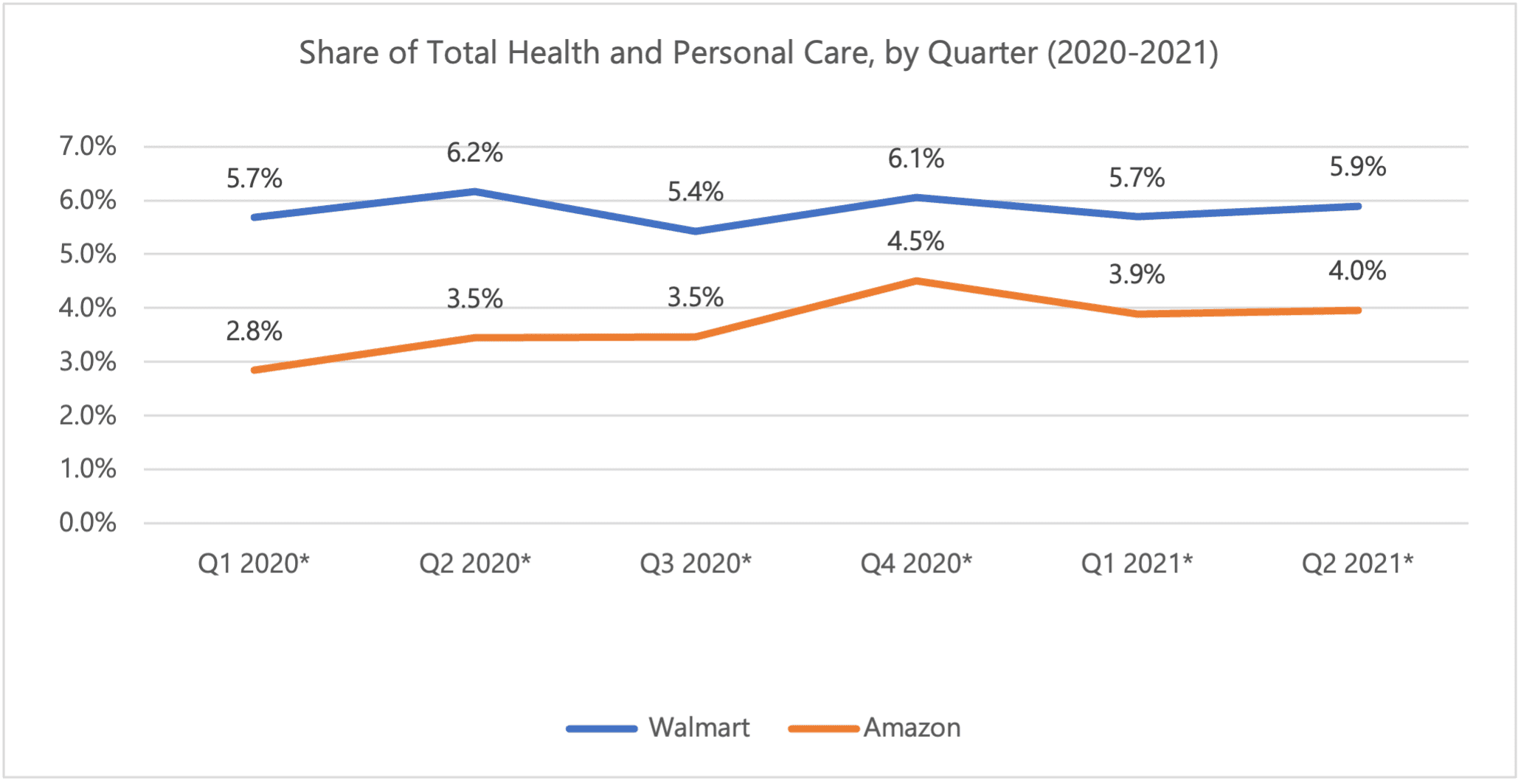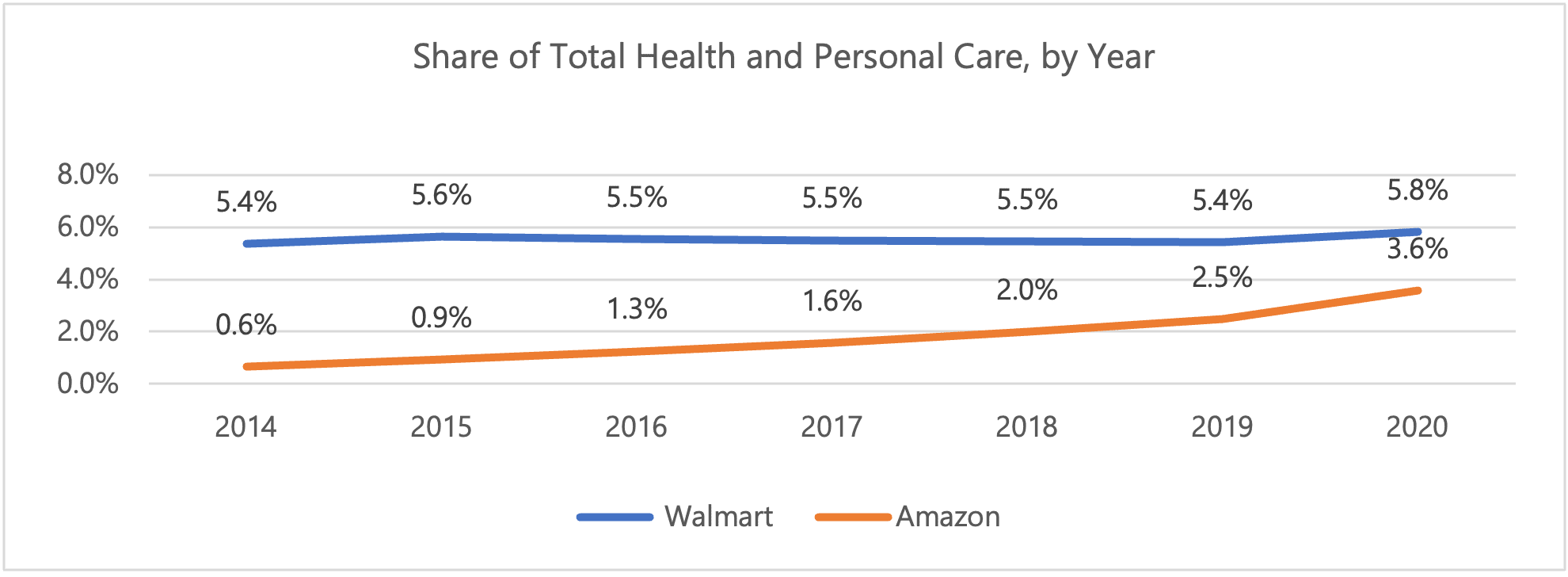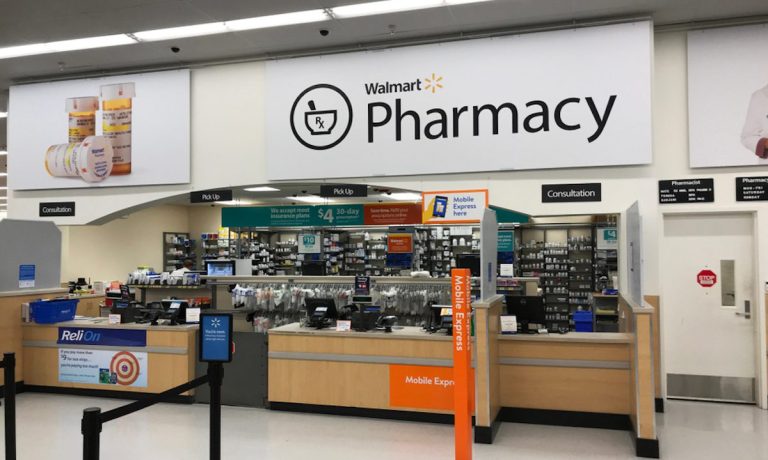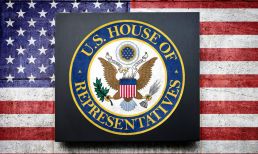Walmart still holds a lead over Amazon when it comes to health and personal care products, though increasing competition across the wellness space has both companies struggling to make any serious ground in the past two quarters.
Looking back to the beginning of 2020, in the run-up to the global pandemic, Walmart’s share of the health and personal care market has barely moved from quarter to quarter, even as COVID-19 caused consumers to spend more time and money on health. Amazon, however, has seen a bump from 2.8% of the category to 4%.

Source: PYMNTS Data
Looking over the past seven years, though, it’s clear that Amazon’s boost in the last 18 months is no coincidence; the eCommerce giant has been quietly and steadily increasing its share of the health and wellness category, closing the gap with Walmart but not taking any of the Arkansas company’s share.
PYMNTS’ proprietary data are derived from a gross market value standpoint, which tracks the full value of everything sold, not the actual revenue the companies earn by way of partial commissions on items sold through third parties on their platforms.

Source: PYMNTS Data
Research conducted by McKinsey earlier this year found that 79% of people believe wellness is important, with 42% considering it a top priority. Every market surveyed by the management consulting firm saw a “substantial increase in the prioritization of wellness,” McKinsey said, ranging from 27% to 65% across countries. The global wellness market is estimated to be valued at over $1.5 trillion, with an annual growth rate of between 5% and 10%.
Both Walmart and Amazon have tried in recent months to make headway in expanded healthcare offerings. In June, the companies made news within hours of each other for their efforts to lower drug prices, just weeks before Walmart rolled out a private brand of insulin. Both companies are also making moves in telehealth, with Walmart acquiring MeMD and Amazon landing its first employer customer for Amazon Care, the company’s virtual primary care business.
Advertisement: Scroll to Continue
See also: AMZN vs. WMT Weekly: The War on Drugs Heats up Over Prices
Navigating the Crowd
The wellness market, however, is getting increasingly crowded, likely making it even harder for Amazon and Walmart to gain share. Earlier this week, for example, telehealth startup Hims & Hers inked a partnership with eCommerce fashion retailer REVOLVE to advance health and wellness products for millennial and Generation Z consumers. REVOLVE is now carrying Hims & Hers products for skincare, haircare, hair growth, sleep supplements and sexual health.
Additionally, Walgreens last month launched a credit card rewards program meant to incentivize healthy living choices. And the retailer, in partnership with VillageMD, plans to open at least 600 Village Medical at Walgreens locations in more than 30 U.S. communities within the next four years.
According to McKinsey, services account for roughly 30% of wellness spending, a number that could increase in the coming years. Additionally, for retailers, health services could be a way to get consumers in the door.
Walmart began opening in-store health clinics in 2019, and CEO Doug McMillon told analysts last month that he hopes the retailer can ultimately play a role in connecting consumers with healthcare around the world.
“But the clinics aren’t the thing on its own,” he said. “It’s how we stitch this whole thing together, from telehealth and the role that healthcare plays in the home on mobile devices, to how you triage a customer when they start to interact with you to direct them to get the right care at the right time.”
Amazon, in addition to its online pharmacy and telehealth services, is reportedly developing capabilities through Alexa and Amazon Web Services to create a new operating system for healthcare facilities that can help manage records and apply artificial intelligence (AI) to predict when a person might get sick.
And in July, the eCommerce company began selling at-home COVID-19 tests to consumers, which some see as the first of many tests the company wants to roll out. The Financial Times reported that a recent job listing sought a person with “the skills and savvy to chart ambiguous or new territory with local, state and national regulators for clinical diagnostics.”
Related news: AMZN vs. WMT Weekly: New Leaders all Around






